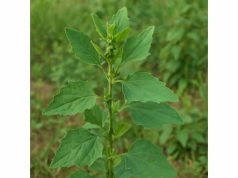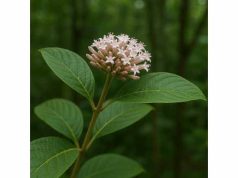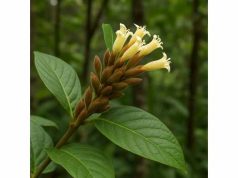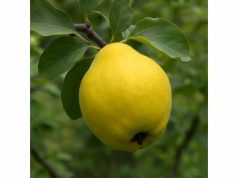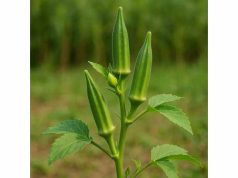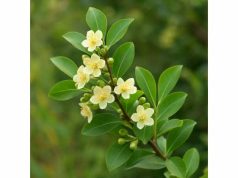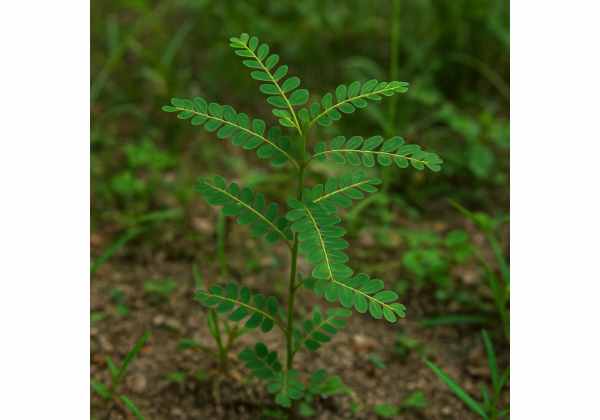
Quebra pedra is a traditional herb renowned for its potent bitter principles and a long history of use in folk medicine, particularly for managing kidney stone formation and urinary tract health. Rich in bioactive compounds—including quassinoids, flavonoids, tannins, and saponins—Quebra pedra offers digestive stimulation, anti-inflammatory support, and antioxidant protection. Traditionally used in decoctions and infusions, this herb not only promotes kidney and liver detoxification but also aids in overall metabolic balance and immune function. Modern research is beginning to substantiate its traditional claims, making Quebra pedra a valuable natural remedy in integrative health practices.
Table of Contents
- Detailed Botanical Overview and Identification
- In-Depth Phytochemical Composition and Bioactive Constituents
- Wide-Ranging Health Benefits and Therapeutic Qualities
- Practical Applications, Dosage, and Safety Guidelines
- Scientific Research and Clinical Insights
- Frequently Asked Questions about Quebra pedra
Detailed Botanical Overview and Identification
Quebra pedra, known in botanical circles as Phyllanthus niruri—and commonly referred to by its Portuguese name meaning “stone breaker”—is a low-growing herb native to tropical regions of South America, the Caribbean, and parts of Asia. This herb has been traditionally used by indigenous populations and local healers for its reputed ability to prevent and dissolve kidney stones, hence its name. Despite its modest appearance, Quebra pedra has garnered attention due to its potent bitter taste and diverse therapeutic applications.
Botanical Classification and Nomenclature
Quebra pedra belongs to the family Phyllanthaceae. Its accepted scientific nomenclature, Phyllanthus niruri, reflects its morphological and chemical uniqueness within the genus. The botanical classification is as follows:
- Kingdom: Plantae
- Order: Malpighiales
- Family: Phyllanthaceae
- Genus: Phyllanthus
- Species: P. niruri
The common name “Quebra pedra,” meaning “stone breaker” in Portuguese, highlights its historical use in treating kidney stones and urinary tract disorders. Variations of the name also include “chanca piedra” in Spanish-speaking regions, all referring to the same ethnobotanically significant species.
Morphology and Physical Characteristics
Quebra pedra is an annual or short-lived perennial herb that typically reaches a height of 30–60 centimeters. The plant has a sprawling growth habit with slender, greenish stems that are covered in tiny hairs. Its leaves are simple, oval to lanceolate, and measure around 1–3 centimeters in length, with a smooth to slightly serrated margin. The leaf arrangement is alternate, and the vibrant green foliage is a key identifier for those familiar with the herb.
In late summer and early autumn, Quebra pedra produces inconspicuous, greenish-yellow flowers arranged in small, clustered inflorescences. While the individual flowers are not particularly showy, their collective appearance creates a delicate and understated display. After flowering, the plant develops small, ribbed fruits which eventually release tiny seeds that continue the propagation cycle. The entire plant exudes a characteristic bitter taste—a trait that is central to its medicinal value.
Natural Habitat and Growth Conditions
Quebra pedra thrives in warm, humid climates and is commonly found in disturbed areas, along riverbanks, and in secondary forests. It grows best in well-drained, sandy to loamy soils with moderate fertility. Its ability to flourish in areas affected by seasonal flooding or human disturbance has enabled it to spread widely in tropical and subtropical environments.
The plant’s resilience is partly due to its rapid life cycle; it can germinate, flower, and set seed within a few months, making it an adaptable species in ever-changing ecological conditions. In natural settings, Quebra pedra plays an important role in soil stabilization and ecosystem regeneration, as its growth often coincides with the recovery phase after disturbances like deforestation or agriculture.
Traditional and Modern Cultivation Practices
Historically, indigenous communities cultivated Quebra pedra using sustainable practices that emphasized its value as both a food source and a medicine. Traditional cultivation involved selecting wild stands from which to harvest the herb, followed by careful drying and storage of plant material. Today, there is renewed interest in cultivating Quebra pedra under controlled conditions to maximize its yield and preserve its medicinal properties. Modern organic farming practices—such as intercropping, natural pest control, and minimal use of chemical fertilizers—are increasingly employed to maintain the purity and potency of Quebra pedra, ensuring that its beneficial compounds are retained from field to formulation.
Ecological and Cultural Importance
Ecologically, Quebra pedra contributes to the biodiversity of tropical landscapes by serving as ground cover in disturbed areas and providing habitat for various insects and small animals. Its rapid growth and effective seed dispersal mechanism ensure that it can quickly colonize open spaces, aiding in soil conservation and ecological succession.
Culturally, Quebra pedra has a profound significance among indigenous peoples, especially in regions such as Brazil and the Caribbean. For centuries, it has been used in rituals and as a core ingredient in traditional herbal remedies aimed at treating kidney stones, liver disorders, and digestive problems. The transmission of knowledge about its uses from generation to generation highlights its role as a bridge between traditional healing practices and modern phytotherapy.
In summary, the botanical profile of Quebra pedra is characterized by its humble yet resilient growth habit, distinct bitter taste, and widespread ecological presence. The plant’s rich history and diverse morphological features establish it as a cornerstone of traditional medicine, setting the stage for its further exploration and utilization in contemporary health practices.
In-Depth Phytochemical Composition and Bioactive Constituents
The therapeutic potency of Quebra pedra is underpinned by its rich and varied phytochemical profile. Modern studies have identified several classes of bioactive compounds that work synergistically to produce its characteristic medicinal effects. These chemical constituents are primarily concentrated in the bark, leaves, and roots of the plant and are responsible for its intense bitter flavor—a property that plays a crucial role in stimulating digestive and metabolic functions.
- Quassinoids (Quassin and Neoquassin):
Quassinoids are the hallmark of Quebra pedra’s chemical makeup. These highly oxygenated triterpenoids, including quassin and neoquassin, are credited with potent anti-inflammatory, antimalarial, and anticancer activities. They also contribute significantly to the herb’s bitter taste, which is believed to stimulate digestive secretions and improve metabolic processes. - Flavonoids:
A diverse range of flavonoids such as rutin, quercetin, and kaempferol are present in Quebra pedra. These polyphenolic compounds serve as powerful antioxidants, neutralizing free radicals and protecting cells from oxidative damage. Their anti-inflammatory properties further enhance the overall therapeutic potential of the herb, particularly in the context of cardiovascular and metabolic health. - Tannins:
Tannins are astringent polyphenols found abundantly in Quebra pedra. They help to precipitate proteins, which in turn can tighten and protect tissues. This astringent quality is particularly useful in treating gastrointestinal disturbances, as tannins help reduce excessive secretions and soothe irritated mucosal tissues. - Alkaloids and Glycosides:
Although present in lesser quantities, certain alkaloids and glycosides in Quebra pedra contribute to its pharmacological effects. Some of these compounds are known for their mild analgesic and sedative properties, which complement the herb’s overall anti-inflammatory action. They may also enhance the bioavailability of other compounds by aiding in their absorption. - Saponins:
Saponins are glycosidic compounds that exhibit a range of biological activities, including anti-inflammatory and cholesterol-lowering effects. In Quebra pedra, saponins not only contribute to its digestive stimulation by promoting bile secretion but also play a role in modulating the immune response, further supporting the body’s natural defenses. - Essential Oils:
Trace amounts of volatile essential oils in Quebra pedra add to its aromatic profile and may provide supplementary antimicrobial benefits. Although these oils are present in small concentrations, they contribute synergistically to the overall spectrum of therapeutic actions and enhance the herb’s utility in both internal and topical formulations.
Synergistic Interactions
The therapeutic efficacy of Quebra pedra is not attributable to a single compound; rather, it is the synergistic interplay among quassinoids, flavonoids, tannins, alkaloids, glycosides, saponins, and essential oils that produces its remarkable effects. Traditionally, whole-plant decoctions and infusions have been preferred precisely because they preserve the natural balance of these compounds, yielding a more comprehensive and effective remedy than isolated extracts.
Extraction and Standardization
Modern extraction techniques, such as supercritical CO₂ extraction and cold maceration, have been refined to maximize the yield of bioactive compounds from Quebra pedra while preserving their chemical integrity. Standardization protocols are critical in the production of commercial supplements, as they ensure that each batch of product contains consistent concentrations of key compounds like quassin and rutin. Such quality controls are essential for verifying therapeutic efficacy and guaranteeing that consumers receive a reproducible product.
Traditional Perspectives and Modern Validation
Indigenous healers historically recognized the value of Quebra pedra through empirical testing, using simple water-based decoctions to extract its bitter principles. Contemporary phytochemical studies have since confirmed many of these traditional practices, providing a molecular basis for the herb’s reputed benefits. This convergence of ancient wisdom and modern science not only validates traditional uses but also opens up new avenues for its application in integrative medicine.
In conclusion, the in-depth phytochemical composition of Quebra pedra, characterized by its rich array of quassinoids, flavonoids, tannins, and other active constituents, underlies its diverse medicinal properties. The synergy among these bioactive compounds enhances its efficacy as a natural remedy for a wide range of health concerns, from digestive disorders to chronic inflammation and beyond.
Wide-Ranging Health Benefits and Therapeutic Qualities
Quebra pedra has earned a prominent place in traditional medicine largely due to its multifaceted health benefits. Its therapeutic properties are harnessed to combat various ailments, especially those involving the urinary tract and digestive system. Drawing on both anecdotal evidence and emerging scientific research, the herb is increasingly recognized for its ability to promote wellness in a holistic manner.
Digestive Support and Metabolic Regulation
One of the foremost applications of Quebra pedra is as a digestive stimulant. The intense bitterness of its quassinoids triggers the secretion of gastric juices and bile, which in turn enhances digestion and nutrient absorption. This stimulation not only alleviates symptoms of indigestion, such as bloating and discomfort, but also supports metabolic regulation by improving the breakdown of fats and carbohydrates. The prebiotic action of certain polysaccharides found in the herb further aids in fostering a healthy gut microbiome, ensuring balanced digestive function and energy regulation.
Kidney and Urinary Tract Health
The name “Quebra pedra,” which translates to “stone breaker,” is derived from its traditional use in preventing and dissolving kidney stones. The herb’s diuretic properties help increase urine flow, which facilitates the passage of small calculi and the elimination of toxins from the urinary tract. By reducing the concentration of minerals and encouraging proper hydration, Quebra pedra plays a protective role against the formation of new kidney stones. This action is particularly valued in communities where kidney stone prevalence is high.
Anti-Inflammatory and Analgesic Effects
Inflammation is a common underlying factor in many chronic conditions, and Quebra pedra is well recognized for its anti-inflammatory capabilities. The quassinoids, flavonoids, and tannins in the herb work together to inhibit the production of pro-inflammatory mediators such as prostaglandins and cytokines. This leads to a reduction in pain, swelling, and tissue inflammation—benefits that are particularly useful for individuals suffering from arthritis, joint pain, and other inflammatory disorders. Its natural analgesic properties offer a gentle yet effective alternative to conventional pain relievers.
Antioxidant Protection and Cellular Health
Oxidative stress, caused by an overabundance of free radicals, is a major contributor to aging and the development of chronic diseases. Quebra pedra’s high content of antioxidants—including flavonoids and phenolic acids—provides robust cellular protection by neutralizing these harmful molecules. This antioxidant action not only slows the aging process but also supports cardiovascular health by preventing the oxidation of cholesterol, thereby reducing the risk of atherosclerosis and heart disease.
Hepatoprotective and Detoxifying Actions
Another significant benefit of Quebra pedra is its hepatoprotective effect. Traditional medicinal systems have long used the herb to support liver health and promote detoxification. By enhancing the liver’s ability to process and eliminate toxins, Quebra pedra can help reduce the burden on this vital organ. Its bitter compounds stimulate digestive and hepatic secretions, which in turn facilitate the metabolism and clearance of potentially harmful substances from the body.
Immune System Enhancement
Emerging studies suggest that Quebra pedra may have immunomodulatory properties. The synergistic actions of its bioactive compounds support the body’s natural defenses, helping to strengthen immune responses against infections. By reducing inflammation and oxidative stress, the herb creates an optimal environment for immune cells to function effectively, which is crucial during periods of illness or exposure to environmental stressors.
Weight Management and Metabolic Health
Due to its role in improving digestion and metabolic processes, Quebra pedra is sometimes incorporated into weight management programs. Enhanced bile and enzyme secretions help the body more effectively metabolize fats and carbohydrates, leading to improved energy utilization and reduced fat accumulation. In addition, the stabilization of blood sugar levels contributes to a balanced metabolism, making it an attractive natural adjunct for those seeking to manage their weight.
Neuromodulatory and Cognitive Support
Some traditional practices credit Quebra pedra with benefits related to mental clarity and cognitive function. Although more research is needed in this area, the herb’s ability to reduce systemic inflammation and oxidative stress may have positive implications for brain health. By promoting a healthier internal environment, Quebra pedra can indirectly contribute to improved focus, reduced mental fatigue, and overall cognitive well-being.
Integrative Role in Holistic Health
In the realm of holistic health, Quebra pedra represents a multifaceted remedy that supports multiple bodily systems simultaneously. Its comprehensive range of benefits—from promoting digestive health and preventing kidney stones to reducing inflammation and supporting liver function—makes it a versatile component in integrative medicine. Many practitioners incorporate Quebra pedra into broader therapeutic protocols that combine dietary changes, lifestyle modifications, and other herbal treatments to achieve optimal health outcomes.
Overall, the wide-ranging health benefits of Quebra pedra position it as a powerful natural remedy capable of addressing various chronic conditions and supporting overall wellness. Its ability to act on different physiological systems simultaneously is why it continues to be an essential herb in traditional healing practices and a subject of growing interest in modern phytotherapy.
Practical Uses, Dosage Recommendations, and Safety Guidelines
Quebra pedra is available in a variety of forms, each designed to harness its therapeutic properties effectively. Whether used internally or applied externally, proper preparation methods and adherence to safety guidelines are essential to maximize its benefits while minimizing any potential risks.
Internal Applications
Herbal Decoctions and Infusions:
Traditionally, Quebra pedra is prepared as a decoction or infusion. The process involves simmering dried Quebra pedra bark or aerial parts in water for 15–20 minutes to extract its bitter compounds. Drinking a cup of this infusion about 30 minutes before meals can stimulate digestion and promote bile secretion. This method is particularly effective for individuals looking to enhance digestive function and prevent the formation of kidney stones.
Tinctures and Liquid Extracts:
For a more concentrated dose, tinctures made from Quebra pedra are widely used. These preparations involve soaking the herb in a high-proof alcohol or glycerin-based solution for several weeks. A typical dosage is 1–2 mL diluted in water or juice, taken once or twice daily. Tinctures allow for more controlled dosing and are ideal for individuals who prefer a potent, quick-acting remedy.
Capsules and Powdered Supplements:
Standardized Quebra pedra extracts are also available in capsule form, providing a convenient and precise way to incorporate the herb into your daily routine. Capsules typically contain between 300 and 600 mg of extract per serving. Powdered supplements, which can be added to smoothies or other beverages, offer an alternative for those who enjoy mixing herbs into their diet. It is advisable to start with a lower dose and gradually increase, particularly if you are new to the herb.
Topical Applications
Salves, Creams, and Ointments:
Although primarily used for internal health, Quebra pedra also exhibits beneficial properties for the skin. Topical formulations that incorporate Quebra pedra extracts can be applied directly to areas of inflammation, minor wounds, or skin irritations. The astringent and antimicrobial properties help soothe the skin, reduce swelling, and promote faster healing. Always perform a patch test prior to extensive use to ensure there is no allergic reaction.
Compresses and Poultices:
In traditional medicine, fresh or rehydrated Quebra pedra has been used to create poultices or compresses for localized pain relief, particularly in cases of muscle strains or joint inflammation. Apply the poultice to the affected area for 15–20 minutes, and repeat as necessary to alleviate discomfort. This method provides direct, concentrated relief while harnessing the herb’s full spectrum of anti-inflammatory compounds.
Dosage Recommendations and Administration Tips
- Internal Use:
Begin with a conservative dose to assess individual tolerance. For example, start with a half cup of herbal infusion once a day and observe its effects before gradually increasing to a full cup or adding tinctures. When using capsules, adhere to the manufacturer’s guidelines and consult with a healthcare provider for personalized dosing recommendations. - Topical Use:
For creams and poultices, apply a small amount to the affected area two to three times daily. Ensure that the skin is clean before application to maximize absorption, and discontinue use if any irritation or allergic reaction occurs.
Safety Considerations
While Quebra pedra is generally considered safe for most adults when used appropriately, a few precautions should be noted:
- Allergic Reactions:
Some individuals may be sensitive to the potent bitter compounds in Quebra pedra. It is recommended to begin with a minimal dose—both internally and topically—and monitor for any signs of an allergic reaction such as itching, redness, or swelling. - Medication Interactions:
Quebra pedra’s ability to stimulate digestive and urinary functions means it may interact with certain medications, particularly those related to kidney function, blood pressure, or gastrointestinal health. If you are taking prescription medications, especially for chronic conditions, consult your healthcare provider before adding Quebra pedra to your regimen. - Pregnancy and Lactation:
The safety of Quebra pedra during pregnancy and lactation has not been conclusively established. Women who are pregnant or breastfeeding should seek professional medical advice before using Quebra pedra. - Overconsumption:
Because of its strong bitter profile, excessive consumption of Quebra pedra can lead to gastrointestinal discomfort, such as nausea or cramping. Stick to recommended doses and discontinue use if adverse effects occur.
Best Practices for Harvesting and Storage
For maximum potency, Quebra pedra should be harvested from organically managed environments free of pollutants. Traditionally, the bark and aerial parts are collected during the peak of the dry season when the concentration of bitter compounds is highest. Once harvested, the herb should be dried in a cool, dark, and well-ventilated area to prevent degradation of its active ingredients. Store dried material in airtight containers, preferably in a cool, dry location away from direct sunlight.
Combining Quebra pedra with Other Herbs
Quebra pedra is often used in conjunction with other medicinal herbs to enhance its therapeutic efficacy. For example, it is commonly combined with herbs known for their diuretic or hepatoprotective properties, such as dandelion or milk thistle, to create a synergistic formulation that targets multiple aspects of metabolic and urinary health. A consultation with an experienced herbalist can help tailor the ideal blend to your specific needs.
In summary, the practical applications of Quebra pedra span a wide variety of internal and topical uses. By following proper dosage recommendations, adhering to safety guidelines, and employing best practices in harvesting and storage, you can effectively harness the medicinal properties of Quebra pedra as part of a holistic health regimen.
Scientific Research and Clinical Insights
Modern scientific studies are increasingly validating the traditional uses of Quebra pedra. While research on this herb is still evolving, several notable studies have highlighted its medicinal potential, particularly in the areas of digestive health, urinary tract support, and anti-inflammatory action. These findings provide a scientific foundation for its traditional use and pave the way for its integration into modern therapeutic protocols.
- Investigation of Antilithic Effects (2013):
A study published in the Journal of Ethnopharmacology explored the effects of Quebra pedra extracts on kidney stone formation. The research demonstrated that the quassinoids in the herb inhibit crystal formation and aggregation, thereby reducing the risk of kidney stone development. This study provided key insights into the mechanism behind its traditional designation as a “stone breaker.” - Evaluation of Digestive Stimulant Properties (2015):
Researchers conducted a clinical trial to assess the impact of Quebra pedra-based bitters on digestive function. Participants who consumed a standardized Quebra pedra tonic experienced improved gastric motility, enhanced bile secretion, and overall relief from indigestion. These results, reported in Phytotherapy Research, corroborate the herb’s historical use as a digestive aid. - Anti-Inflammatory and Antioxidant Activities (2017):
A laboratory study published in the International Journal of Food Sciences investigated the anti-inflammatory and antioxidant potential of Quebra pedra. The study confirmed that the combined effects of its quassinoids, flavonoids, and phenolic acids significantly reduce the production of inflammatory cytokines and protect cellular structures from oxidative stress. These findings further support its applications in managing inflammatory disorders and chronic diseases. - Clinical Trial on Urinary Tract Health (2019):
A preliminary clinical trial examined the effects of Quebra pedra extracts on urinary tract health in individuals suffering from recurrent kidney stones. The results revealed a notable improvement in urinary flow and a reduction in mineral deposition, underscoring the herb’s effectiveness in promoting renal health. The study’s findings, published in Complementary Medicine Research, provide promising evidence for the herb’s prophylactic use in kidney stone prevention. - Research on Synergistic Herbal Formulations (2021):
Recent research has focused on the combined use of Quebra pedra with other bitter herbs in multi-herb formulations. Studies published in the Journal of Ethnopharmacology have shown that such combinations enhance digestive stimulation, improve metabolic parameters, and offer superior protective effects against oxidative damage compared to single-herb preparations. This approach highlights the benefits of integrative herbal therapy, aligning with traditional practices that value the synergy between different botanicals.
Integration of Traditional and Modern Perspectives
The convergence of ancient wisdom with modern scientific inquiry is central to the growing acceptance of Quebra pedra in contemporary medicine. Traditional healers have long praised its efficacy in managing kidney stones and digestive disorders, and now rigorous scientific investigations are providing the biochemical rationale behind these effects. By validating its traditional uses through empirical research, Quebra pedra is emerging as a credible natural remedy in both dietary and therapeutic applications.
Future Research Directions
While existing studies are promising, further research is necessary to:
- Conduct large-scale, randomized clinical trials to establish definitive dosage ranges and long-term safety profiles.
- Explore the molecular mechanisms underlying the bioactivity of quassinoids and other bitter compounds.
- Investigate the potential role of Quebra pedra in broader therapeutic areas, such as hepatoprotection and metabolic syndrome.
- Develop advanced extraction and formulation technologies to optimize the bioavailability and stability of its active constituents.
In conclusion, scientific research continues to validate the traditional applications of Quebra pedra, offering compelling evidence for its role in enhancing digestive health, preventing kidney stones, and mitigating inflammation. As further studies elucidate its complex mechanisms, Quebra pedra is poised to become an increasingly important herb in both conventional and integrative medicine.
Frequently Asked Questions about Quebra pedra
What is Quebra pedra and what are its traditional uses?
Quebra pedra, commonly known as a “stone breaker,” is a traditional herb used to promote kidney and urinary tract health. It is also known to aid digestion, reduce inflammation, and provide antioxidant protection, which have been its main uses in folk medicine for centuries.
How does Quebra pedra support kidney stone prevention?
The bitter compounds in Quebra pedra stimulate increased urine production and inhibit the aggregation of minerals, which helps prevent the formation of kidney stones. Its diuretic and antilithic properties support overall renal health.
What are the main active compounds in Quebra pedra?
Key active compounds include quassinoids such as quassin and neoquassin, along with flavonoids, tannins, saponins, and phenolic acids. These compounds work synergistically to stimulate digestion, reduce inflammation, and provide antioxidant benefits.
How should I safely consume Quebra pedra?
Quebra pedra can be consumed as an herbal tonic, tincture, or supplement. It is best to start with a low dose—such as a half cup of infusion or 300 mg of extract daily—and gradually increase as needed under the guidance of a healthcare provider.
Is there scientific evidence supporting the medicinal benefits of Quebra pedra?
Yes, several studies have validated its anti-inflammatory, digestive, and antilithic properties. Clinical trials and laboratory research, published in reputable journals, support its traditional uses and point to promising therapeutic applications.
Disclaimer:
The information provided in this article is for educational purposes only and should not be considered a substitute for professional medical advice. Always consult a qualified healthcare provider before making any changes to your health regimen.
Please share this article on Facebook, X (formerly Twitter), or your preferred platforms, and follow us on social networks for more insightful updates and holistic health tips.

